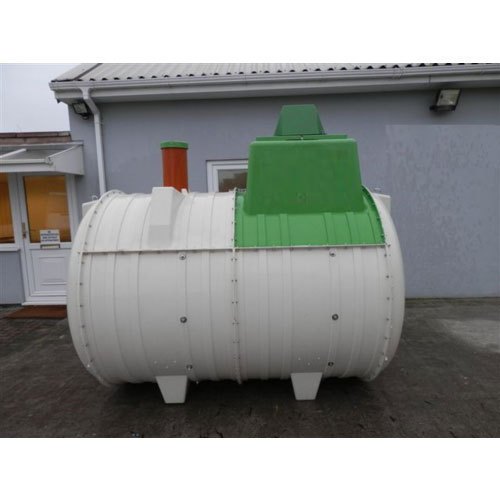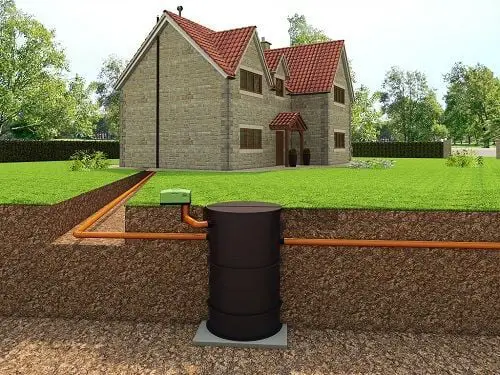The purpose of a domestic sewage treatment system commonly called a septic tank system, is to treat and dispose of sewage produced by homes and small towns. This will remove contaminants and impurities from the water, making it safe to release or use again. There won't be a connection to a centralised sewer system, and Domestic Sewage Treatment Plant are useful if a municipal wastewater treatment facility still needs to serve the property. The two basic components of home sewage treatment plants are a primary treatment stage and a secondary treatment stage. The kind of plant chosen depends on the particular requirements of the area as well as regional regulations.
Domestic sewage treatment systems must be routinely maintained and monitored to ensure that they are operating effectively and producing treated water that complies with local regulations. It handles a considerable volume of wastewater from homes with hazardous loads. It must be purified in order to safeguard both the environment and the general populace.

Domestic Sewage Treatment Plant Characteristics
Domestic sewage treatment facilities have several features, such as:
- Size: Domestic sewage treatment plants range in size depending on the number of customers served and the volume of wastewater produced. These facilities are designed for individual households or small towns.
- Treatment Method: Domestic sewage treatment facilities typically employ a biological treatment method where organic debris in the wastewater will break down by naturally existing microorganisms.
- Flexibility: The finest domestic sewage treatment systems should be adaptive to various wastewater types and varying environmental conditions. It is adaptable enough to manage different types of sewage and simple to modify to the building's or neighbourhood's requirements.
- Maintenance: Ongoing maintenance is necessary to guarantee the system's efficiency. Regular septic tank pumping and treatment process observation are part of this.
- Effluent Quality: Compared to municipal wastewater treatment plant output, treated effluent from a domestic sewage treatment facility is often of inferior quality. It is however still processed to a degree that makes environmental discharge safe.
- Impact on the environment: Domestic sewage treatment facilities may cause groundwater contamination, surface water pollution, and odour problems if improperly built or maintained.
- Cost: Domestic sewage treatment systems are less expensive to build and run than municipal wastewater facilities. Hence, it need regular maintenance and it is important to replace them regularly.
- Regulation: Depending on the location and kind of system, domestic sewage treatment facilities are subject to different rules and requirements for permits. These rules are in place to safeguard the environment and public health.
Process Of Domestic Sewage Treatment Plant
To remove impurities from sewage, domestic sewage treatment plants combine physical, chemical, and biological processes. Depending on the kind and layout of the treatment facility, different treatment methods will work for different industries. In order to eliminate impurities and make the water acceptable for reuse or discharge into the environment. Domestic sewage water treatment often comprises many phases for the treatment purpose. The general flow of the procedure is as follows:
- Screening: The first step involves utilizing screens or grates to filter out large waste from the sewage. Therefore, it includes sticks, stones, plastics, and other large non-biodegradable materials.
- Grid Removal: Using grit chambers, Grit and sand go away from the sewage during this step. Whereas the heavier particles sink to the bottom and collect up.
- Primary Sedimentation: The sewage will now settle down into sizable containers known as primary clarifiers during the primary sedimentation process. While the lighter solids float to the top and produce scum, the heavier solids sink to the bottom and form sludge. This will remove both sludge and scum for further processing.
- Biological Treatment: At this stage, the sewage undergoes treatment biologically, where bacteria and other microbes decompose the nutrients and organic matter. Sewage is typically mixed with a culture of microorganisms in a large tank known as an aeration basin in an activated sludge system. The mixture gets oxygen to promote the development of the bacteria that decompose the organic components in the sewage.
- Secondary Sedimentation: After biological treatment, a process of secondary sedimentation allows sewage to re-settle in a fresh set of clarifiers. The split sludge goes down to the aeration basin for further processing while the water advances to the next stage.
- Disinfection: Any pathogens in the wastewater get out during this stage to prepare it for reuse or discharge into the environment. It uses numerous methods, such as ozonation, UV light, or chlorination for achieving this disinfection.
- Sludge treatment: The sludge remains after the primary and secondary sedimentation stages and requires treatment separately before discharging into the water bodies. It uses techniques for dewatering, digesting, and thickening to reduce the volume and make handling easier.
- Effluent discharge: The treated water works as effluent will go into the environment. So, we will recycle it again for industrial or non-potable processes like irrigation.
Different Types Of Domestic Sewage Treatment Plants
- Conventional septic tank systems: Traditional septic tank systems are the most fundamental and widely used kind of household sewage treatment facility. It is made up of a septic tank, a sizable subterranean tank used to separate liquids from solids. While the liquid effluent flows out of the tank and is dumped into a drain field, the particles fall to the bottom of the tank where they are decomposed by bacteria.
- Aerobic treatment systems: Systems for aerobic wastewater treatment using oxygen to speed up the decomposition of organic material. Compared to traditional septic systems, aerobic treatment systems are more effective. It creates higher-quality effluent for releasing it into the environment for irrigation.
- Systems using recirculating sand filters: These systems filter wastewater pollutants using sand filters. The filter system then performs additional treatment on the wastewater before disposing of them.
- Constructed wetland systems: These systems treat wastewater using natural processes. Before the water discharges, the effluent passes through a wetland region where plants and microorganisms filter out toxins.
- Systems with mounds: These systems are employed in regions with high water tables or unfavourable soil conditions. Before discharging, the effluent is necessary to treat biologically after pumping into a mound of sand or gravel.
It is currently in great demand in the electrical and transportation sectors. Moreover, water reuse, wastewater treatment, and desalination are all extremely important processes that require specialised tools and knowledge. A professional company serving as a concessioner makes it possible for customers to acquire water through a BOO system. The public partner merely buys a water supply facility, potentially saving up to 30% on water cycle expenses. A BOOT agreement commits WOG to manage the design, building, and operation of a water supply plant, industrial effluent or waste-to-energy facility while upholding the technical specifications





